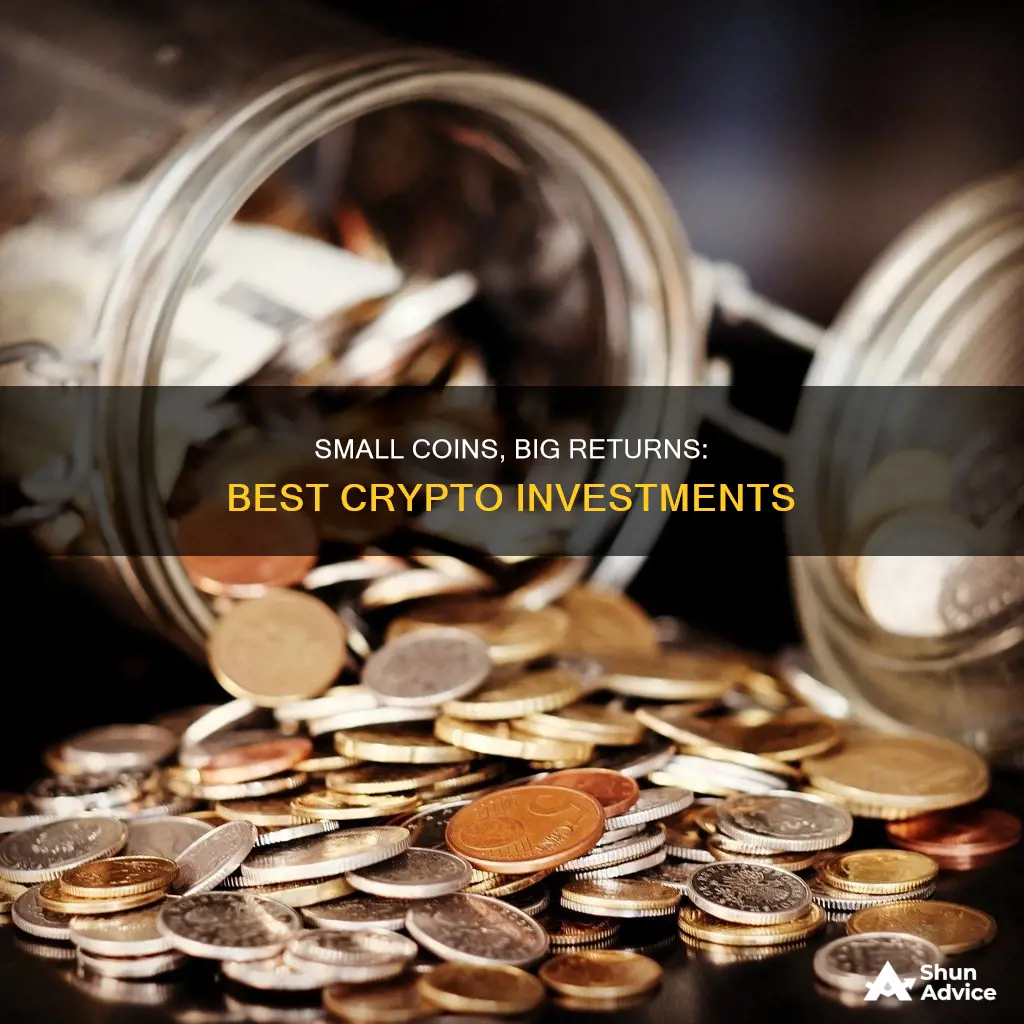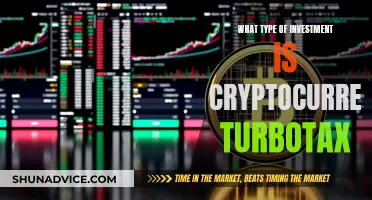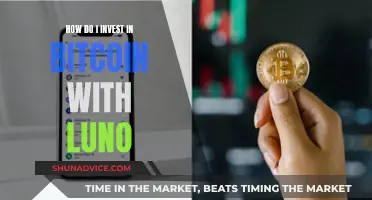
With thousands of coins to choose from, investing in the volatile world of cryptocurrencies is not for the faint-hearted. The crypto market has experienced extreme volatility, with its value peaking at $2.9 trillion in November 2021, dropping to less than $900 billion in mid-2022, and rebounding to over $2.5 trillion in June 2024.
Bitcoin and Ether are the two most established cryptocurrencies and are in a league of their own. Bitcoin, the original cryptocurrency, has a market cap of about $1.3 trillion, or roughly 53% of the overall market. It has the most mainstream acceptance, as evidenced by the debut of 11 new Bitcoin exchange-traded funds (ETFs) in January.
Ether, the native token on the widely-used Ethereum blockchain, has a market cap of about $450 billion and accounts for nearly 18% of the total crypto market. The Ethereum blockchain is custom-made for smart contracts, decentralized finance tools, Web3 applications, and the trading of non-fungible tokens (NFTs).
Other cryptocurrencies worth considering include Solana (SOL), Avalanche (AVAX), Polygon (MATIC), and Cardano (ADA). These coins have more risk associated with them and should be considered purely speculative wagers.
What You'll Learn

Best coins for beginners
If you're new to crypto investing, it's important to understand that the market is incredibly volatile and not for the faint of heart. It's also crucial to do your own research and consult a financial advisor before making any investment decisions. With that said, here are some of the best coins for beginners to consider:
- Bitcoin (BTC): Bitcoin is the first and largest cryptocurrency by market capitalization, making it a relatively safe bet for beginners. It has the most mainstream acceptance and can be used as a speculative asset or a store of value.
- Ether (ETH): Ether is the native token on the widely used Ethereum blockchain. It has inherent utility as the token of a popular network that supports smart contracts, decentralized finance tools, Web3 applications, and NFT trading. Ether is also more environmentally friendly than Bitcoin due to its recent switch to a proof-of-stake protocol.
- Solana (SOL): Solana is a blockchain known for facilitating the easy creation of decentralized applications (dApps). It is faster, has lower fees, and is more easily scalable than some of its competitors. The Solana token has had a meteoric rise since its launch in 2020 and is currently the fourth-largest cryptocurrency (excluding stablecoins).
- Cardano (ADA): Cardano is a proof-of-stake blockchain that aims to foster a developer-friendly ecosystem for dApps. It has a hard cap on the total number of coins, making it relatively less volatile than some other options. Cardano also has a strong development team and a rigorous research-based approach.
- Polygon (MATIC): Polygon is a layer-2 scaling solution that increases the scalability and security of the Ethereum blockchain. It enables developers to build advanced dApps and DeFi solutions while taking advantage of Ethereum's network effects. MATIC is a relatively risky investment but has significant growth potential as blockchain adoption continues to grow.
- USD Coin (USDC): USD Coin is a stablecoin, meaning its value is pegged to the US dollar to reduce volatility. It is backed by fiat-collateralized reserves, making it a stable and reliable option for beginners who want to avoid the extreme price swings of other cryptocurrencies.
Coinbase Investing: A Beginner's Guide to Getting Started
You may want to see also

Coins with high volatility
Volatility is a statistical measure used to determine the risk of a certain asset. In general, the higher the volatility, the riskier the investment. Volatility below 1% is very low, 1-2% is low, 2-5% is medium, 5-10% is high, 10-20% is very high, and above 20% is extremely high.
- Cat in a Dog's World (MEW)
- NEM (XEM)
- Dogwifhat (WIF)
- Fantom Libero Financial
- Ethereum Name Service
- Threshold Network Token
- Basic Attention Token
- Hillstone Finance (HSF)
- Guild of Guardians (GOG)
- Matrix AI Network (MAN)
- Decentralized Social (DESO)
- BitcoinHarryPotterObamaSonic10Inu (ERC-20)
- Guild of Guardians (GOG)
- NAIImage Generation AI (IMG)
Some of these coins have experienced tremendous growth. For example, the price of Solana's SOL token started at $0.77 in 2020 and was valued at around $139.36 in August 2024, a gain of 17,999%. Similarly, Binance Coin (BNB) had a price of $0.10 in 2017, and by August 2024, its price had risen to around $476, an increase of 475,746%.
It is important to remember that investing in volatile cryptocurrencies is inherently risky, and it is possible to lose money as fast as you can make it. However, volatile coins also provide investors with exposure to assets with high profit potential, short-term day trading opportunities, and portfolio diversification.
Acorns Invest in Bitcoin? Exploring Acorns' Crypto Offerings
You may want to see also

Coins with low volatility
When it comes to investing in cryptocurrencies, stablecoins are often considered a safer option due to their low volatility. Stablecoins are cryptocurrencies that are designed to minimise price fluctuations and provide a more stable investment option. Here are some examples of stablecoins with relatively low volatility:
Tether (USDT)
Tether was one of the first stablecoins to be launched, and it remains one of the most popular options. Each Tether coin is backed by one US dollar, maintaining a 1:1 ratio. Despite some legal issues in 2017, Tether has maintained its stability and is widely used for transactions and profit-taking.
USD Coin (USDC)
The USD Coin is another stablecoin that is pegged to the US dollar. It is issued by the Centre Consortium, which includes Circle and Coinbase. As Circle is based in the US, the USD Coin is subject to US regulations, providing an additional layer of security and stability.
TrueUSD (TUSD)
TrueUSD is a stablecoin that is also backed by fiat currencies, including the US dollar, in bank accounts that are regularly audited. This provides transparency and assurance that the coins are fully collateralised.
Paxos Standard (PAX)
Paxos Standard is yet another stablecoin that aims to maintain a 1:1 ratio with the US dollar. It is issued by the Paxos Trust Company and is approved and regulated by the New York State Department of Financial Services.
Gemini Dollar (GUSD)
The Gemini Dollar is a regulated stablecoin issued by Gemini Trust Company, LLC. It is also pegged to the US dollar and is approved by the New York State Department of Financial Services.
These stablecoins offer a more stable investment option within the cryptocurrency market, providing a hedge against the high volatility often associated with other cryptocurrencies. They are particularly attractive to investors during periods of market instability. However, it is important to note that even stablecoins are not completely immune to price fluctuations and potential regulatory challenges.
Strategizing for Bitcoin's Crash: A Guide to Investing
You may want to see also

Coins with high risk
Small-cap cryptocurrencies are typically considered high-risk investments. These coins have high volatility and are highly uncertain, making investors feel anxious about buying them. However, they can be rewarding if the crypto projects boom and gain more demand, resulting in high returns for investors. Here are some small-cap coins with high risk and high reward potential:
- Pepe Unchained ($PEPU): A Pepe-themed meme coin built on the Ethereum L2 blockchain. Early investors can benefit from staking rewards, and the coin aims to replicate the success of Pepe.
- Crypto All-Stars ($STARS): A staking platform that unites all top meme coins under one roof. It allows buying, selling, and staking popular meme cryptos (PEPE, DOGE, SHIB, etc.) for substantial rewards.
- Base Dawgz ($DAWGZ): A new doge-themed meme coin offering multi-chain interoperability. Early investors can access staking rewards and discounted market prices.
- PlayDoge: A high-risk crypto that blends Doge meme with play-to-earn gaming. It offers staking rewards and has seen significant token staking.
- The Meme Games ($MGMES): An Olympics-style meme coin offering gamified presale bonuses and high staking rewards.
- Shiba Shootout ($SHIBASHOOT): A Wild West-themed meme token with staking benefits, lotteries, and voting rights.
- Mega Dice Token ($DICE): A GameFi token hosted on the Solana blockchain, offering daily performance-based rewards.
- 5th Scape (5SCAPE): An augmented reality gaming ecosystem built on blockchain technology. Token holders gain early access to premium VR content.
- 99Bitcoins (99BTC): A "learn-to-earn" concept where users receive tokens for crypto education. It offers high staking rewards and exclusive community access.
- Sponge V2 (SPONGEV2): An upgraded version of the Sponge meme token, offering high staking yields.
- Smog (SMOG): A high-risk meme coin with high staking APYs and low prices.
- ETukTuk (TUK): A sustainable crypto project based on the Cardano blockchain, aiding the transition to electric vehicles by setting up EV charging stations. It offers high APY and has raised over $3 million.
- KAI (KAI): A cat-themed meme token with high staking yields and community rewards. It has raised $250,000 in its presale phase.
Bitcoin Investment: Safe or Risky Bet?
You may want to see also

Coins with low risk
Investing in cryptocurrencies is a risky business, but some coins are less volatile than others. Here are some of the best low-risk crypto coins to invest in:
Tether (USDT)
Tether is a stablecoin, which means it's designed to be less volatile than other cryptocurrencies. Its value is tied to the US dollar, and it's backed by reserves. Tether is a good option for investors who are wary of the extreme volatility of other coins.
USD Coin (USDC)
Like Tether, USD Coin is a stablecoin backed by US dollars, with a value meant to remain at a 1 USD to 1 USDC ratio. It's powered by Ethereum, and can be used for global transactions.
Cardano (ADA)
Cardano is a blockchain platform that uses a proof-of-stake consensus protocol called Ouroboros, which allows it to validate transactions without the high energy costs associated with other blockchains. Cardano is notable for its early adoption of proof-of-stake validation, which reduces transaction time and energy usage. It also enables smart contracts and decentralized applications.
Polygon (MATIC)
Polygon is a decentralized application built on the Ethereum network, designed to expand Ethereum into a multi-chain system. It's meant to make it faster, more efficient, and less expensive to deploy decentralized applications. Polygon is backed by Coinbase and Binance, and its team and technology are considered sound.
Wall Street Memes (WSM)
Wall Street Memes is a recently launched meme coin that has raised over $30 million so far. It's a risky option, but if Dogecoin and Shiba Inu have taught investors anything, it's that a meme coin is never truly down and out.
It's important to remember that even these low-risk coins carry a significant amount of risk. Cryptocurrencies are highly volatile and unpredictable, and their values can fluctuate wildly. Always do your own research and consult a financial advisor before investing.
Litecoin Investment: Best Timing Strategies and Opportunities
You may want to see also
Frequently asked questions
Some small coins with high growth potential include Shiba Inu (SHIB), Polygon (MATIC), and Cardano (ADA).
Small coins often have lower prices, making them more accessible to new investors. Additionally, they may have higher growth potential due to their lower market capitalization.
Small coins typically carry more risk than larger, more established cryptocurrencies like Bitcoin and Ether. They may be more volatile and susceptible to market forces, so investors should carefully consider their risk tolerance before investing.
When choosing a small coin to invest in, it's important to consider the underlying technology, the problem it aims to solve, the team behind the project, and the level of community support. It's also crucial to remember that the cryptocurrency market is highly volatile, and there is always a risk of losing money when investing in any cryptocurrency.







